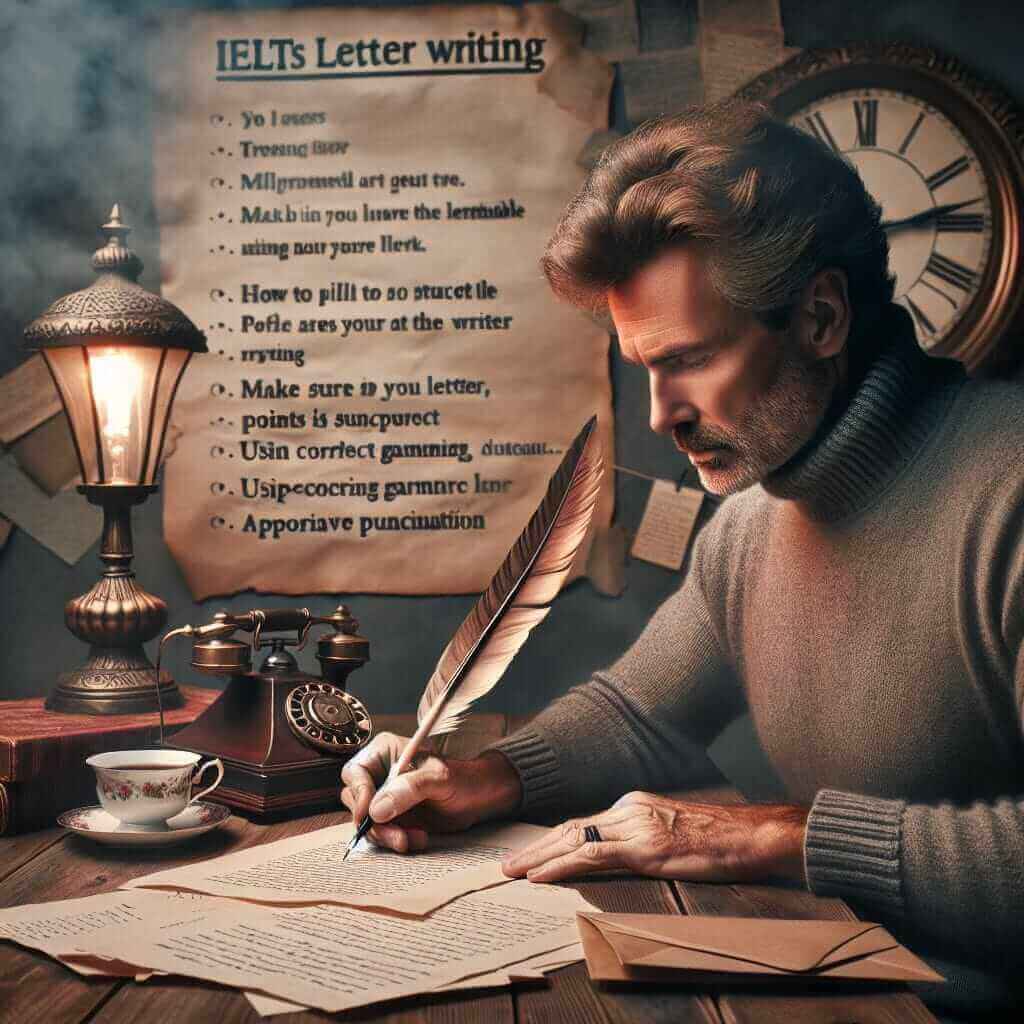The IELTS General Training (GT) Writing Task 1 requires candidates to write a letter in response to a given situation. This task assesses your ability to communicate in writing under a situational context, whether formal or informal. It’s crucial not only for achieving a high score but also for proving your practical English skills.
Understanding the Keyword: IELTS Writing Task 1 Techniques for GT
In IELTS GT Writing Task 1, you may be asked to write various types of letters, such as requests, complaints, offers, suggestions, or apologies. Mastering the techniques associated with each type of letter is essential for effectively handling this task.
Different Types of Letters
- Formal Letters: Addressed to someone you don’t know well.
- Semi-formal Letters: Addressed to someone you know in a professional context.
- Informal Letters: Addressed to friends or family.
Key Techniques
-
Understanding the Prompt:
- Identify the task — What is the situation?
- Determine the type of letter you need to write.
- Be clear about the purpose of your letter.
-
Structuring Your Letter:
- Opening: Use the appropriate greeting (e.g., “Dear Sir/Madam” for formal, “Dear John” for informal).
- Body: Divide the content into paragraphs, each covering a specific point. Use clear topic sentences.
- Closing: Use an appropriate ending phrase (e.g., “Yours sincerely” for formal, “Best wishes” for informal).
-
Language and Tone:
- Formal language for formal and semi-formal letters.
- Conversational, colloquial language for informal letters.
- Politeness is imperative, especially in formal contexts.
-
Detailing and Examples:
- Give specific details to support your points.
- Remain clear and concise.
Examples and Application
Example 1: Formal Letter of Complaint
Prompt: You recently bought a product online and are not satisfied with it. Write a letter to the company to complain about the product and request a refund.
Structure:
- Opening: “Dear Sir/Madam,”
- Paragraph 1: Introduce the situation. “I am writing to express my dissatisfaction with the XYZ product I recently purchased from your website.”
- Paragraph 2: Detail the problem. “The product arrived damaged and did not function as advertised.”
- Paragraph 3: Request a resolution. “I request a full refund for my purchase and expect a response at your earliest convenience.”
- Closing: “Yours sincerely, [Your Name]”
Example 2: Informal Letter to a Friend
Prompt: Write a letter to a friend inviting them to visit you.
Structure:
- Opening: “Dear Anna,”
- Paragraph 1: Extend the invitation. “I hope this letter finds you well! I would love for you to come and visit me next month.”
- Paragraph 2: Explain why. “We can explore the city together and catch up on life.”
- Paragraph 3: Suggest dates and arrangements. “How about the first week of April? Let me know your availability.”
- Closing: “Best wishes, [Your Name]”

Common Mistakes and How to Avoid Them
- Misunderstanding the Tone: Always match the tone to the audience. Formal letters should not contain slang or overly casual expressions.
- Ignoring the Prompt: Ensure that you address all the bullet points mentioned in the prompt.
- Poor Structure: Keep your letter well-organized. Avoid long, unbroken paragraphs.
- Incorrect Openings and Closings: Use the correct greeting and closing for the type of letter you are writing.
Practice and Exercises
Practice Task: Write a letter to a city council addressing an issue in your community and suggest a possible solution.
Steps to Practice:
- Break down the prompt to understand the task.
- Draft an outline using the correct structure.
- Write the opening, body, and closing.
- Review and edit for grammar, coherence, and tone.
Practicing regularly and analyzing sample letters can greatly improve your performance in the IELTS GT Writing Task 1.
Conclusion
Mastering IELTS Writing Task 1 for the General Training module requires understanding the type of letter, structuring it appropriately, and maintaining the right tone and language. By practicing these techniques and learning from examples, you can enhance your writing skills and perform confidently in your IELTS examination. Keep practicing, stay focused, and you’ll see improvement in no time!
For more tips and detailed guides, feel free to explore other resources on our website. Have any questions or need further assistance? Leave a comment below—we’re here to help!